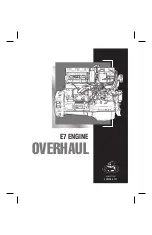
WREN 75 - High Performance Gas Turbine Engine Page
3
Ensure gas only is supplied the engine, liquid gas must not be allowed to pass into the system. Gas supply must be
disconnected until ready for immediate use. Gas is heavier than air and can fill a model if allowed to leak unchecked,
and become a potential explosion hazard.
Turbine oil can be are hazardous to health and must not be allowed to come into contact with skin, mouth, eyes or
through ingestion, accidental or otherwise. Take care when decanting and ensure any spillage is wiped away
immediately and clean any affected area with warm soapy water.. Wash hands and any affected part immediately
after any contact.
Turbine oil can discolour or affect certain paint finishes as may be used. Take precautions to prevent spillage .
Do not discard or allow any spillage to run into drains.
If removing the glow-plug to test it, keep fingers or bare skin away from possible burn from the glowing element – use
a metal tool or appropriate insulation.
As operator, it is
your
responsibility to ensure any spectators (especially small children) or helpers are kept well away
from the engine whilst it is operating. The safest position to operate the engine is directly in front. The area inline and to
the rear of the turbine is the most dangerous area and you must keep well clear of this.
Keep all spectators away from the side and rear of the engine to a distance of at least 10mtrs (30ft) radius, as shown. If
operating from a pit area take special care as safety distances are often difficult to maintain.
Keep all helpers close by and brief them fully on their duties before starting the engine. One helper can carry out the
role of fireman. Ensure they are aware of what to do in event of emergency and where to position the extinguisher if
required.
Do not attempt to alter the starting characteristics of the engine by spraying ignition agents into the
intake, as might be used for gasoline and diesel engines. A dangerous fire and flashback may result.
Specifications:
Max thrust
7.5kg (16.5lbs) nominal @ 160,000rpm.
Idle speed
45,000rpm
Pressure Ratio
3:1
Fuel consumption
260ml/min @ full power @ 15’C.
Weight engine only
1030gms
Weight ancillaries ex. ECU battery 260gms.
Setting Up.
A 2-cell LiPo battery pack is supplied with the engine. Charge the pack prior to use. A larger capacity
pack can be substituted if required. Before connecting up, ensure the charger is one specified for use
with LiPo batteries and is set to the correct charge rate.
Fuel.
The engine is designed to run on Jet A or Jet A1 kerosine. Paraffin such as is available at hardware or
DIY stores or at filling stations from the pump is a suitable alternatively where available.
Oil.
To this fuel must be added 5% oil, ie a mixture of around 20:1 fuel to oil. Suitable oils are turbine oils
such as Mobil JetOil, Aeroshell 500 or Exxon 2380. Alternatively, good quality 2-stroke motor cycle oil
such as Castrol Power 1 TTS (Halfords) may be used.
When decanting fuel, take precautions to ensure no solid particles or water droplets are carried over
into your fuel tank – use an effective filter system. Note that jet fuels and oils should not be allowed to
come into skin contact so wear suitable gloves and take extra care when handling.
If you are new to turbines it is a good idea to set the engine up on a simple test-stand and to get used
to starting and running the engine before installing in a model. A three-piece mounting strap is
supplied and this should be attached to a pair of timber battens screwed to a base-board. The two
straps must fit securely on the engine to prevent the casing sliding. The various components can be
temporarily secured to the baseboard, be especially careful not to allow any cables or pipes to run
close to the engine intake where they might be sucked against the fod screen.
The mounting must be properly secured as the thrust from this small engine is considerable and users
are asked to use “
belt and braces
” in mounting to avoid any possibility of the stand being pushed over































